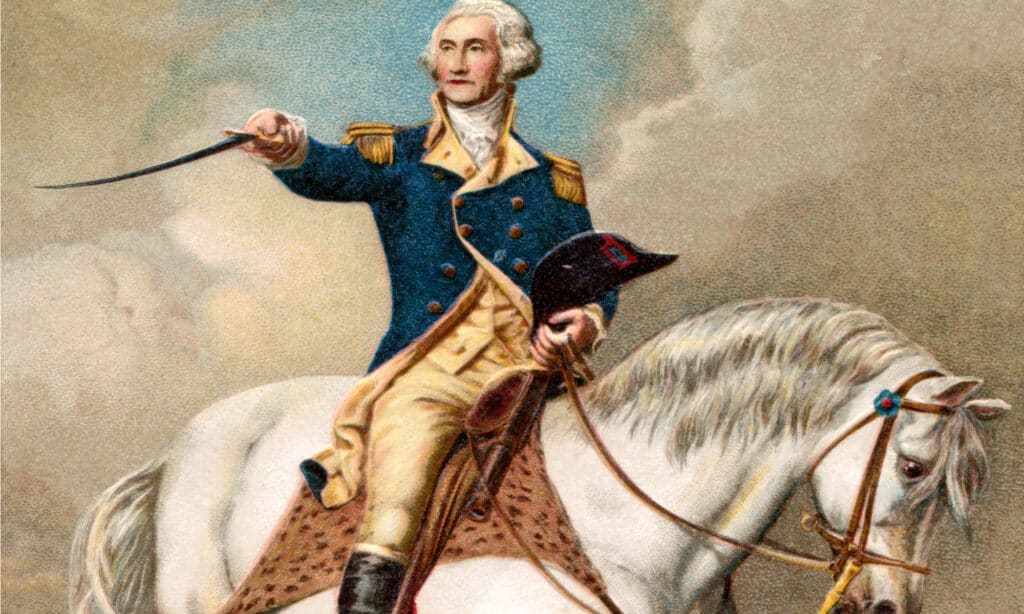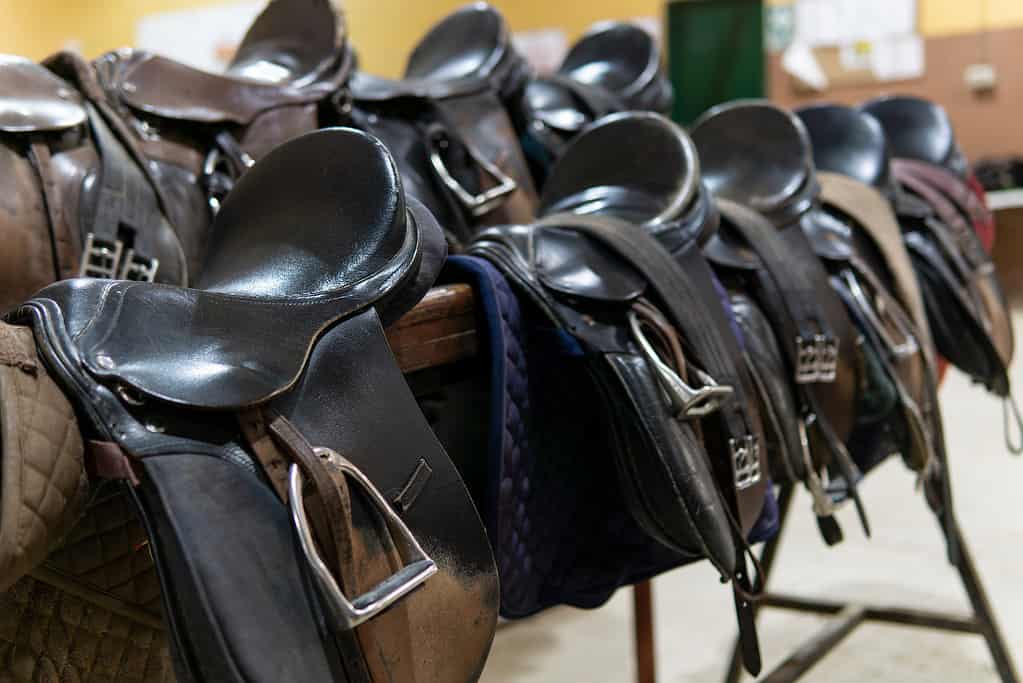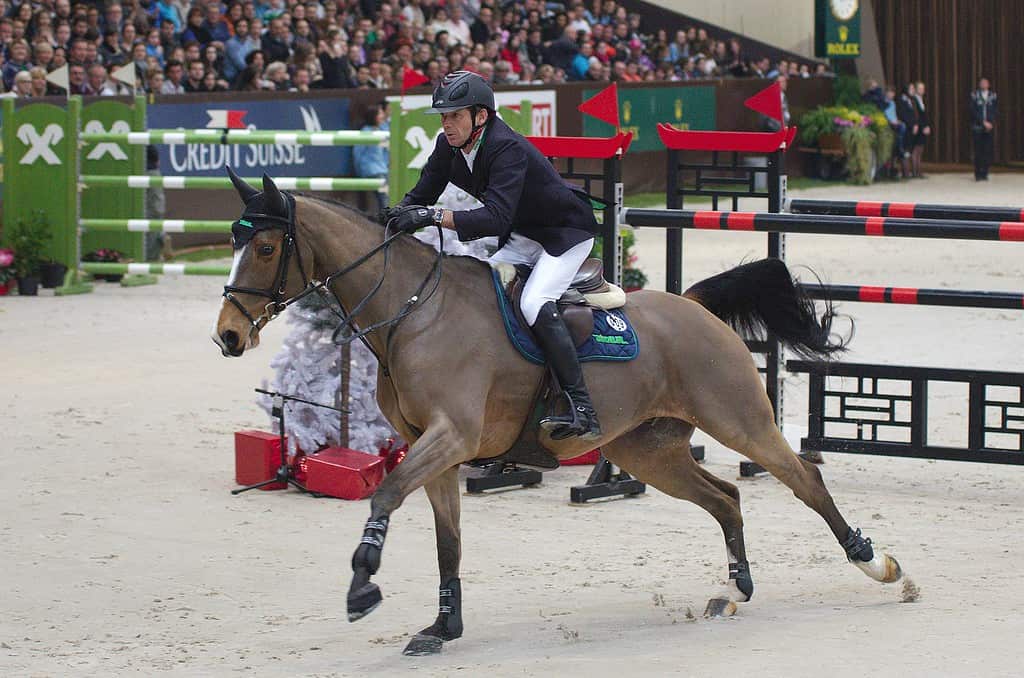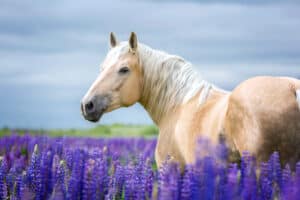Horseback riding has been around since 3500 B.C. Back then, horses were working animals primarily used for war, transportation, trade, and agriculture. Prior to riding horses, we used to drive them. Hooked to a harness, carriage, or piece of heavy equipment, these horses played an important role in world history. Present day, horses are still a beloved animal and horseback riding is still a popular activity. There are two broad equestrian disciplines — English vs. Western riding — with a few major differences between them. Let’s jump into the 8 differences between these two equestrian disciplines.
8 Differences Between English vs. Western Riding
English vs. Western riding is a popular debate in the equestrian world. Typically, you choose one or the other to practice and compete in. However, there are various disciplines within the English and Western world to choose from, so you have a lot of options. But before we get into that, it’s important to know the history of both.
1. The History

George Washington rode horses into many battles.
©Victorian Traditions/Shutterstock.com
As with much of history, English riding originated in Europe. This style of riding developed horses into cavalry mounts to ride into battle. Horses were also used as a means of transport or for agricultural purposes. Over time, vehicles and weaponry replaced the need for horses so they became used for pleasure and sport.
On the other hand, Western riding traces its roots back to the Spanish Conquistadors who brought their techniques to North American cattle ranches. This riding style developed horses capable of working long, grueling hours to support the cowboys of the West. Over the years, these horses started being bred for competitions and as pleasure-riding companions.
This leads us to the next difference, the tack.
2. The Tack

English saddles are smaller, lighter, and designed to increase contact between horse and rider.
©Wirestock/iStock via Getty Images
The tack, whether you ride English or Western, is designed for the specific discipline. That’s because each piece of equipment serves a different purpose. Let’s get into some examples!
Cattle ranchers use a Western saddle, which is a sturdy piece of tack with a saddle horn on the front. This is unique to Western saddles because cowboys need somewhere convenient to attach the rope after they catch cattle. This is also useful for disciplines like barrel racing or cutting.
English saddles don’t have that. They are much smaller and are designed to keep the rider connected to the horse so they can feel their movement underneath the seat — something much harder to do in a Western saddle because it wasn’t made for that purpose. This is useful for disciplines like dressage and show jumping.
But the differences don’t stop there!
3. The Attire

Western riders wear much more casual gear, even to shows!
©© red_moon_rise/iStock via Getty Images
English vs. Western riding attire is also not the same.
English riders dress much more traditionally and formally, even for lessons at the barn. Western riding gear is much more casual (and even flashy during competitions). Plus, Western riding attire is functional.
English riders wear a helmet, form-fitting jodhpurs, tall boots, and a smart shirt with a jacket during competitions. The exact attire depends on the discipline though. For example, you also need to wear a protective vest for eventing.
Western riders wear bedazzled shirts, bootcut jeans, chaps, cowboy boots, and a hat. While they would forgo the flashy outfits if they’re working cattle, the chaps protect their legs from shrubs on the trail and the wide brim of a cowboy hat protects them from the sun.
Speaking of function, let’s discuss how the riding methods of both English and Western have evolved into what they are today.
4. The Riding Method

Cowboys riding Western use neck reining to control their horse, while English riders rely more on leg yields.
©Bob Pool/Shutterstock.com
Engish riding emphasizes short reins and leg yields. Close contact with their horse allows English riders to perform the movements and maneuvers necessary for competition. Horses ridden across many English disciplines are prized for their manners, style, and athleticism.
On the other hand, long reins and neck yields are used in Western riding. Neck yielding is a key aspect of this type because cowboys need an extra hand to rope cattle. The best Western horses are hardy, swift, and eager to please.
This brings us to the next difference: desirable gaits in English vs. Western riding.
5. The Gaits and Movement

The most desirable movements for English vs. Western riding could not be more opposite.
English riders prefer their horses’ movements to be stride-covering and varietal. In Western riding, horses are expected to be smooth, have consistent gaits, and move low across the ground. Because they are so unique from each other, they even have different names:
- A walk is the same in both English and Western riding
- A trot — sitting or posting — in English riding is called a jog in Western riding
- A canter — collected or extended — in English riding is called a lope in Western riding
- A gallop is the same in both English and Western riding
Since we mentioned gaits and movement, we have to discuss the best-suited horse breeds whether you’re riding English vs. Western.
6. The Horse Breeds

Oldenburg horses are a popular breed for a variety of English riding classes.
Since you want a long, smooth gait in English riding, there are certain breeds that are more popular than others. Warmblood types like Thoroughbreds, Oldenburgs, and Trakehners are tall and offer the exact type of ride suited for English disciplines. You might also see gaited horses used in English riding such as the Standardbred or Tennessee Walking Horse.
Western riding horses don’t need to be tall, but they do need to be tough. The Quarter Horse is, by far, the most common horse for Western riding due to their agility, temperament, and build. Paint horses, Appaloosas, and Mustangs are a few more popular breeds.
While most horses are bred for either English or Western, there is some crossover with breeds used in both. Paint horses and Morgans are incredibly versatile, commonly found competing in English and Western disciplines like showing jumping and barrel racing.
Let’s talk more about the different disciplines depending on whether you ride English or Western.
7. The Disciplines

Barrel racing, a Western discipline, requires a fast and flexible horse and an athletic rider.
©jlophoto/iStock via Getty Images
There are extremely clear differences between English vs. Western riding disciplines, according to the United States Equestrian Federation.
English riding disciplines include:
- English Pleasure
- Carriage Pleasure Driving
- Hunter
- Hunter/Jumping Seat Equitation
- Parade Horse
- Roadster
- Saddle Seat
Western riding disciplines include:
- Reining
- Western
- Western Dressage
- Western/Reining Seat Equitation
But that’s not all! There are other, not internationally recognized, classes such as barrel racing, cutting, side saddle, and eventing. Now that you know the different disciplines, let’s get into the distinct purposes of English vs. Western riding.
8. The Emphasis

You can easily tell an English rider vs. a Western rider by their attire, the breeds they use, and their horses’ gaits.
English riding is typically about style and equitation while Western riding is more about function and the end goal.
English disciplines such as dressage, hunters, and driving focus on the horse and rider’s form, harmony, and manners. What team performs complex movements or maneuvers the best, what rider jumps clear with a well-mannered horse, and what horse looks and acts like it’s made for the show ring?
Western disciplines like barrel racing, cutting, and bronc riding emphasize athleticism and speed. Who can get around the barrels the fastest, who can separate the cow from its herd the quickest, and who can stay on the bucking bronco the longest?
How to Choose Between English vs. Western Riding
As you can see, there are clear differences between English vs. Western riding. From the early history to the attire, tack, and purpose of each discipline, it’s up to you to feel out what calls to you the most.
Whether you decide to ride English or Western, make sure you pick the horse breed best suited for the discipline. You’ll thank yourself later!
Thank you for reading! Have some feedback for us? Contact the AZ Animals editorial team.








